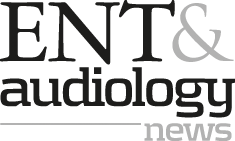
Journal Reviews
Do it like a techy: telepractice in SLT for people with Parkinson’s disease
Parkinson’s disease (PD) is the second most common neurological condition in Australia, and communication difficulties are reported by 90% of people with the condition. Unfortunately, not all people with PD have access to speech and language therapy services due to...
‘Pen’doscope - writing in a reduction in healthcare delivery costs
Optimal management of cleft lip and palate requires a multidisciplinary team approach to treatment, with the goal being maintenance of facial growth and improvement in speech and hearing, in addition to closure of the cleft. This can be especially challenging...
Daflon – a new way to treat idiopathic epistaxis
Epistaxis is a common ENT emergency and most cases are idiopathic. Flavonoids are natural substances with variable phenolic structures that are found in fruit and vegetables and take effect on blood vessels. Daflon is proposed to control epistaxis by “improving...
Work and the risk and carcinoma of the larynx
This is a census on the national cancer registry in France to detect professions at a higher risk of squamous cell carcinoma of the larynx. During the period 2001-2016 there were 244 registered cases of cancer of the larynx. Amongst...
Lingual tonsils and obstrucive sleep apnoea syndrome (OSAS)
Obstructive sleep apnoea can be due to narrowing of the retrolingual space by hypertrophic lingual tonsils. The authors studied 11 patients (five males and six females with a mean age of 44.3 years and a mean BMI of 28.6). All...
Narrow band imaging improves diagnosis of malignant laryngeal lesions
The manufacturers of narrow band imaging (NBI) claim better visualisation of mucosal abnormalities when compared with simple white light. The primary aim of the study was to compare the diagnostic accuracy of NBI and white light to diagnose malignant laryngeal...
Is bone scanning still of value?
This is an article from Australia of 109 patients, 83 of which had CT, 72 MRI and the presence of bone invasion on imaging was compared with the histopathology. Bone invasion was present in 44 of 109 resection specimens. Bone...
A global survey of tracheostomy healthcare provision and patient participation: requirements for improvement
Patients with tracheostomy require comprehensive care which should begin in the preoperative phase and go through immediate postoperative and discharge phases with patient involvement as well. The authors assessed this with a multicentre, cross-sectional survey using a mailing list held...
Do you feel me? Emotional processing post-traumatic brain injury
Traumatic brain injury (TBI) accounted for just under three million accident and emergency admissions in the US in 2013, with common causes including falls, traffic accidents and assaults. Difficulties processing and expressing affective communication is a common sequela of TBI...
Deglutition in pharyngolaryngectomy patients
Circular defects after total pharyngolaryngectomy present a reconstructive challenge. In this study, the authors compared the swallowing results after three reconstructive techniques: free forearm flap, free jejunal loop and folded pectoralis major flap. Forty-six patients were included and were evaluated...
Lymph node ratio in tongue cancer
This is an analysis of 88 patients treated in Switzerland between 2003 and 2012. All patients had a selective neck dissection and recurrence occurred in 25 patients. Overall and disease specific survival were 72% and 80%. They specifically looked at...
Long-term quality outcomes of bimaxillary surgery of obstructive sleep apnoea
This is a review of 12 patients at two years postoperatively and again at at least 17 years. Successful outcome of a decrease in apnoea-hypopnoea index (AHI) of greater than 50% was thought to be success. Eight of the initial...
















